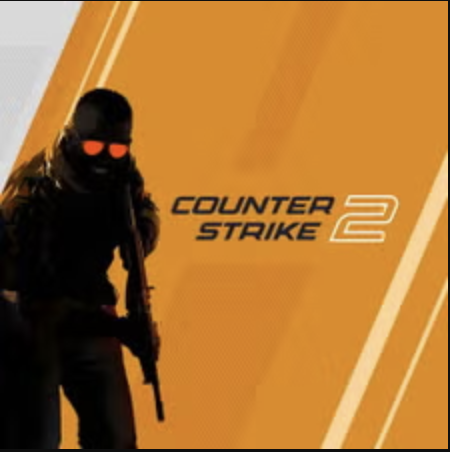Game-Changing Update: The Next WoW Expansion ‘Midnight’ Signals the End for Critical Combat Addons Like WeakAuras and DBM
Popular Now
 Free Fire Max
Free Fire Max
 PUBG Mobile
PUBG Mobile
 Black Myth: Wukong
Black Myth: Wukong
 Warframe
Warframe
 Poppy Playtime
Poppy Playtime
 Stumble Guys
Stumble Guys
 Fortnite
Fortnite
 Among Us
Among Us
 Genshin Impact
Genshin Impact
 CarX Street
CarX Street 
The landscape of high-end content in World of Warcraft is on the verge of its most dramatic transformation in years. With the upcoming expansion, currently known by its codename Midnight, Blizzard Entertainment is poised to fundamentally alter the game’s core experience by severely restricting, or outright disabling, the functionality of the most influential and widely used combat-related addons. This strategic move targets tools like WeakAuras and Deadly Boss Mods (DBM), long considered indispensable for success in Mythic Raiding and high-level Mythic+ dungeons. This shift represents a deliberate effort to rebalance the MMORPG‘s difficulty, promote game accessibility for all players, and return the focus of complex encounters to in-game cues and player skill, rather than third-party computation.
The community reaction is predictably polarizing. While many veteran players express deep concern over the loss of highly customized and essential tools—some even citing a potential “death” of competitive play—Blizzard’s stated intent is to level the playing field. This change aims to dismantle the long-standing “addon arms race” where encounter design became intertwined with the necessity of third-party solutions, effectively punishing players who chose not to, or could not, utilize these complex programs.
SEO Keywords: WoW Midnight Expansion, Combat Addons Disabled, WeakAuras Ban, Deadly Boss Mods Future, MMORPG Accessibility, WoW End-Game Content, Raid Encounter Design, WoW Game Update, Premium Gaming Experience, Competitive Gaming, Mythic+ Strategy.
 The Great Addon Purge: Why Blizzard is Closing the API ‘Black Box’
The Great Addon Purge: Why Blizzard is Closing the API ‘Black Box’
The core of this monumental change lies in a technical modification to the World of Warcraft API—the software interface that allows addons to interact with the game. Game Director Ion Hazzikostas has confirmed that the upcoming pre-patch for Midnight will introduce a significant restriction: the real-time combat data that powers the “optimal problem-solving” capabilities of addons will be sealed off, creating a metaphorical “black box.”
This data—which includes precise information on player buffs, enemy debuffs, ability cooldowns, and the exact timing of complex boss mechanics—will no longer be accessible for logical computation by third-party scripts. This is a direct assault on the functionality that allows a WeakAura package to flash a massive icon telling a player precisely when to use a defensive ability, or a DBM timer to provide a countdown to a raid-wiping mechanic with millisecond accuracy. The move is a conscious decision to shift the burden of real-time analysis back onto the player.
The Affected Addons and Their Role in High-Stakes Gameplay
The impacts are far-reaching, striking at the heart of the current competitive WoW experience:
- WeakAuras (WA): Arguably the most popular and versatile addon, WA’s primary combat function—creating customizable, conditional alerts for every conceivable in-game event—will be heavily curtailed. The community-driven WeakAuras team has already indicated they will not be supporting the addon in a combat capacity for Midnight, a clear sign of the severity of the API restrictions. While non-combat utility may remain, the tool’s essential role in rotation assistance and complex mechanic tracking is over.
- Deadly Boss Mods (DBM) & BigWigs: These critical boss mods, which provide visual and audible alerts for raid and dungeon mechanics, will lose the precision that made them indispensable. While Blizzard is integrating a built-in boss alert system to replace them, it is designed to be less computationally decisive. Encounter warnings will rely more on the new, clearer in-game telegraphs rather than pre-solved, hard-coded timers.
- Rotation Helpers (e.g., Hekili): Any addon that suggests the next best ability in a rotation based on real-time buffs and procs will be rendered ineffective, forcing players to return to manual rotation management and a greater reliance on their own judgment of class mechanics.
The goal is clear: to ensure that the challenge of end-game WoW is derived from a player’s in-the-moment decision-making, visual perception, and communication with their team, rather than the execution of a strategy dictated by a third-party application.
 The New Era of Encounter Design and Class Simplification
The New Era of Encounter Design and Class Simplification
To accommodate the loss of these powerful combat tools, Blizzard is implementing a dual strategy focused on improving the default gaming interface and dramatically adjusting encounter and class design. This strategy aims to uphold a high level of difficulty for hardcore gamers while simultaneously making the baseline game more approachable for casual WoW players.
Redefining Raid and Dungeon Mechanics
The developers have acknowledged that in recent years, they have designed boss encounters with the expectation that players would utilize addons to solve them. This created a vicious cycle that ultimately alienated players without the technical expertise or time to configure complex UIs. The Midnight philosophy reverses this trend:
- Clearer Visual Telegraphs: Boss abilities, hazardous ground effects, and key targets will be significantly more distinct and visually readable, making reliance on a DBM-style voice alert less necessary.
- Longer Reaction Windows: Group mechanics that previously required a near-instantaneous, scripted response will be tuned to offer slightly longer reaction times, giving human players a fairer chance to process the threat.
- Adjustment of Existing Raids: Even current content, such as the Manaforge Omega raid, will receive tuning passes in the pre-patch to ensure the fights maintain an “appropriate level of challenge” without the assistance of combat mods (Source: PC Gamer, October 2025). This proactive approach underscores the commitment to the new design paradigm.
Simplifying the Class System and UI Overhaul
In parallel, the expansion is tackling “button bloat” by simplifying class rotations. All classes are expected to see a rework of their talent builds, resulting in fewer abilities and rotations that are easier to execute optimally without external rotation-helper addons. This is a critical component of the game accessibility push, ensuring that mastering a class is less about memorizing an impossibly long priority list and more about situational awareness.
Furthermore, Blizzard is integrating several features directly into the default UI that were previously exclusive to addons, delivering on their promise of improved baseline functionality:
- A built-in system for cooldown tracking, designed to visually manage personal abilities.
- An official, integrated damage meter, removing the mandatory nature of third-party trackers like Details!.
- A native, customizable system to provide boss alerts, intended to fill the void left by DBM/BigWigs.
The Controversy: Accessibility and the Power User
While the stated goal is admirable—to make WoW more accessible and to promote a more pure form of gameplay—the move has ignited intense debate, particularly concerning two major groups: Accessibility users and Power Users (e.g., Mythic Raiders).
Concerns for Players with Disabilities
One of the most pressing concerns centers on players who rely on addons like WeakAuras not for competitive advantage, but for essential accessibility features. Custom alerts, clear visual cues for procs, and even audio notifications can be vital for players with visual, auditory, or motor-skill impairments. The initial, aggressive implementation in the Midnight Alpha has reportedly disabled even some non-combat, quality-of-life functions. Blizzard has since been pressured to clarify and reverse some of these restrictions, stating they will make changes to minimize collateral damage to non-combat addons (Source: DualShockers, October 2025).
The fundamental question remains: if a community-created tool was providing superior accessibility, is the developer prepared to fill that critical void with an equally robust in-house solution?
The Future of the Race to World First (RWF)
For the elite eSports echelon of World of Warcraft—the guilds competing in the Race to World First (RWF)—the changes are seismic. These teams relied on dedicated WeakAura creators who could script new alerts and timers mid-fight. The removal of this capability means RWF will return to its roots: a true test of on-the-fly execution, raid-leader communication, and raw mechanical skill. It may drastically lengthen the time it takes to clear the highest difficulty content, which could be a boon for viewer engagement but a headache for the professional teams and their sponsors.
CPC Keywords: WoW Subscription Price, Buy Gold WoW, WoW Boosting Service, Raid Carry, Digital Gaming Market, PC Gaming News, MMO Industry Trends.
Conclusion: A Necessary Evolution or a Step Backwards?
The impending death of the high-utility combat addon ecosystem in World of Warcraft with the arrival of Midnight is not a casual change; it is a declaration of independence by Blizzard from the “meta” that their own design philosophy helped to create. By placing a “black box” around critical combat data, they are reclaiming control over the player experience and attempting to ensure that difficulty is derived from the elegance of the encounter design, rather than the mandatory installation of third-party software.
This is a high-stakes gamble. If Blizzard delivers on its promises—providing clearer in-game cues, well-tuned, simplified classes, and a robust, accessible default UI—the MMORPG could become a more unified and inviting experience for millions of players. However, if the integrated replacements fall short of the precision and customization offered by the lost addons, the initial backlash from the competitive gaming community will be significant. The transition period, likely beginning in the pre-patch, will be a critical test for the future direction of World of Warcraft’s end-game. The era of the “addon specialist” is ending; the era of pure player skill is about to begin.










 The Great Addon Purge: Why Blizzard is Closing the API ‘Black Box’
The Great Addon Purge: Why Blizzard is Closing the API ‘Black Box’ The New Era of Encounter Design and Class Simplification
The New Era of Encounter Design and Class Simplification